Buying baby plants and growing them out in larger containers is a quick, fun, and reliable way to build a profitable plant inventory.
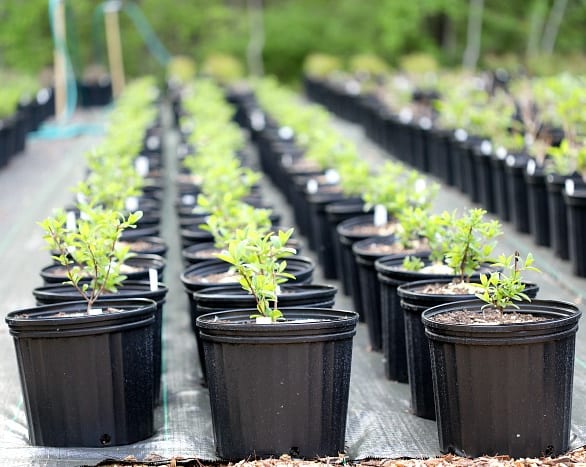
Growing Plants with the Buy and Grow Method involves buying perennial plugs, and shrub liners from excellent wholesale nurseries (Ill share you some of my sources in a little bit), and growing them out in larger nursery containers.
Before I go further, just in case you’re wondering…
What Are Perennial Plugs and Shrub Liners?
It’s simple, for now just think of them as baby plants.
- A perennial plug is a perennial that is several weeks old and is usually grown in a cell tray from either seed or softwood cutting. They are usually shipped with the potting mix attached to the root system.
- A shrub liner is a young shrub that is typically about 1-2 years old. They are usually grown from softwood cuttings, hardwood cuttings, or seed. They can be shipped bare root or with the potting mix attached to its roots.
Growing Plants Using the Buy and Grow Method
It pretty much comes down to a simple 5 step process. At least these are the 5 steps I use to grow thousands of plants each year.
Step 1- Buying Plugs, Liners, and Bare Root Stock
When I buy plugs, liners, and bare root plants I treat perennials and shrubs a little differently.
Perennial Plugs
I usually buy 30 count cell plugs (30 count refers to the size, meaning there are 30 cells per tray), and I pot them up into trade 1-gallon containers.
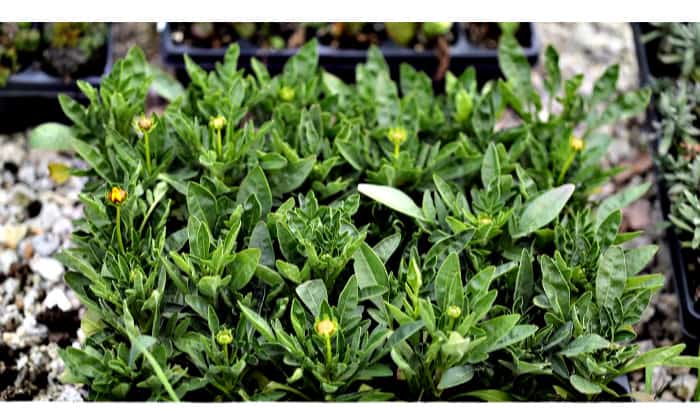
I find that trade 1-gallon (slightly smaller than actual 1-gallon) is the perfect size to get a 30 count plug finished within 8-12 weeks for most perennials.
Just 10 weeks after I took the picture above, my Coreopsis plants look like this…

Bare Root Perennials
I also buy a lot of perennials that are shipped to me bare root.
These perennials are grown in fields and dug up by my supplier when they are still dormant. They are shipped without any soil on their roots.
These plants have a larger root system than plants grown in cell trays so they can fill a trade 1-gallon container much quicker. Usually about 4-8 weeks.
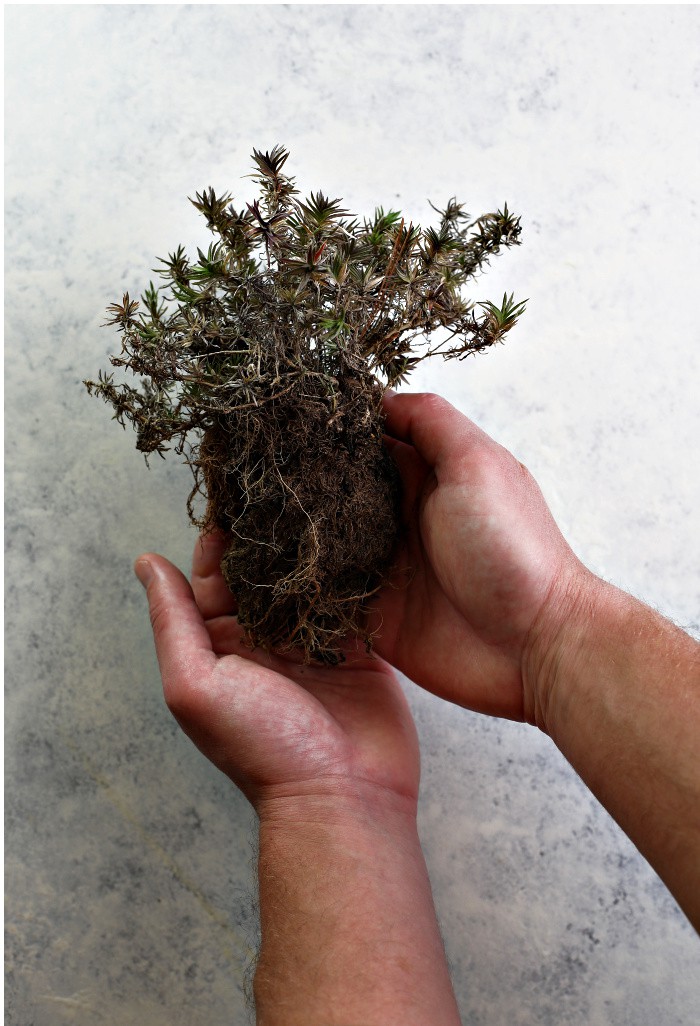
I have to admit when I first pulled this bare root phlox out of the box I thought it was dead. Look how horrible that plant looks above.
I was ready to contact the wholesale nursery I bought them from to politely let them know that they sent me a whole box of dead plants.
Just for kicks I figured I’d pot them up anyway just to see what would happen. Well 6 weeks later and they look like this….
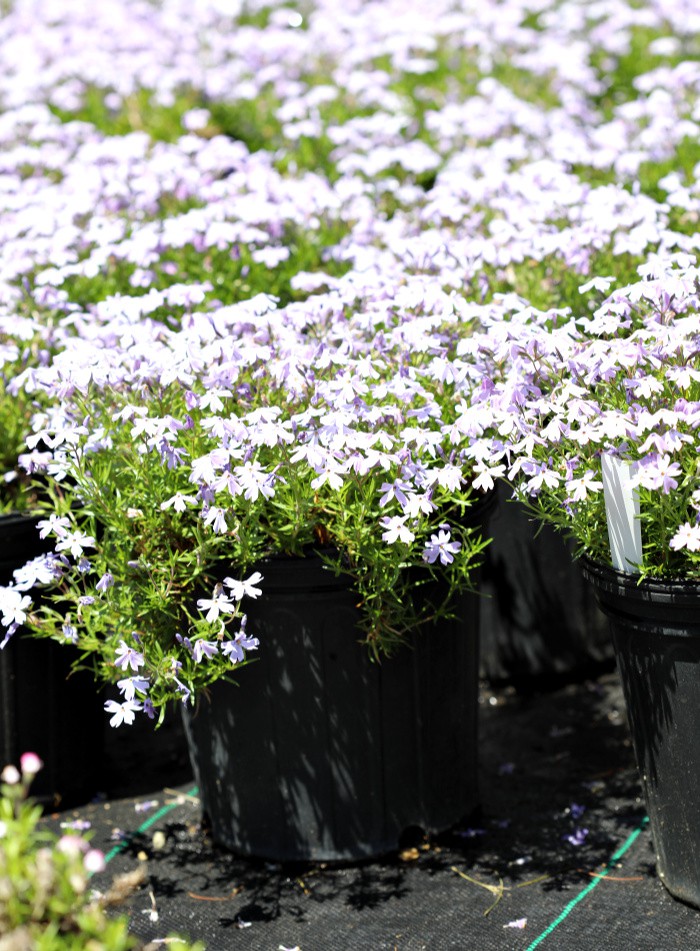
I actually ended up potting these phlox into 2-gallon containers since they are such quick growers. These pretty much sold out in one weekend when I had my first plant sale of the season.
At this point in time, buying plugs and bare root stock is how I grow most of my perennial inventory.
Buying Shrubs
For shrubs, I mostly buy 1-quart liners and pot them up into 3-gallon nursery containers.
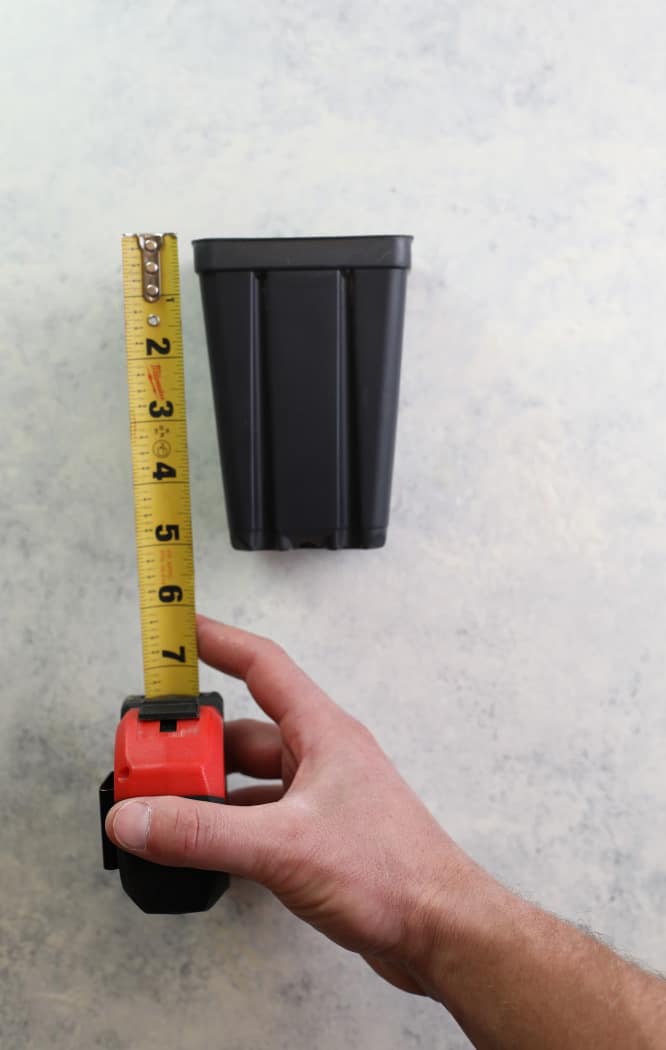
Here’s a pic of a freshly potted up 1-quart liner…

Unlike perennials, shrubs take time. Some quart liners, (depending on the plant species), will be a full 3-gallon shrub within a year, but others may take 2 or 3 years.
If Shrubs Take A Long Time to Grow Why Even Bother?
Because there is a reward for your patience! Growing a 3-gallon shrub from a 1-quart liner will provide you with a much greater savings, or profit margin if you are selling them.
Also, the 3-gallon market certainly isn’t your only option.
I actually grow hundreds of blueberry plants every year in 1-gallon containers. There is a great source for small, but really inexpensive blueberry liners (I promise to give you the name in a little bit.).
I find that these are a better size to finish in 1-gallon containers.
Customers at my plant sales go crazy over the one-gallon blueberry plants. Berry plants in general are hot sellers!
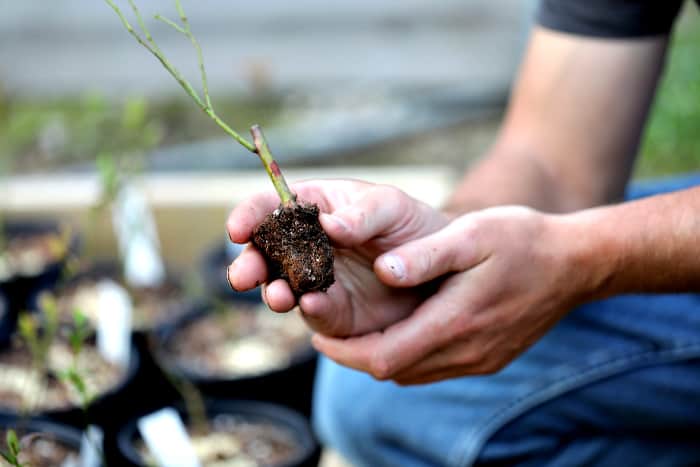
Before Continuing, I Promised to Share Some Favorite Wholesalers…
OK, here it is… A few of my favorite wholesalers for perennials plugs, bare root plants, and shrub liners.
• Moon Valley Nursery– This is where I get my 1-quart liners.
• Walters Gardens– This is where I get a lot of my perennial plugs. And bare root perennials.
• Liner Source– This is where I get 1-gallon evergreens that I pot into a 3- gallon container for a fast finish.
• Bon Bon Blue Berries– This is my source for the small blueberry liners as pictured above.
No matter what vendor you are using, my advice to you is … You want to buy plants early! The best plants usually sell out fast, so I usually have next seasons plants ordered by mid to late summer.
Most vendors will reserve your order and only charge you shortly before your shipping date if you have an account.
Step 2 – Shipping and Timing
It is important to buy your plants early from wholesale nurseries, but when you get these plants shipped to you is a completely different story.
Something I learned the hard way is you really have to know what climate your plants are coming from and what climate your plants are going to.
There are a lot of different variables when it comes to this but as a general rule, you want to avoid taking a plant that has broke dormancy and actively growing in one climate, and then shipping it to a place that is still experiencing deep freezes. This will shock the plant and will most likely kill it!
This can be complicated since every state seems to have very different springtime weather.
When Should You Get Your Baby Plants Delivered?
Personally, here in growing zone 5 I like to receive my plants in late April.
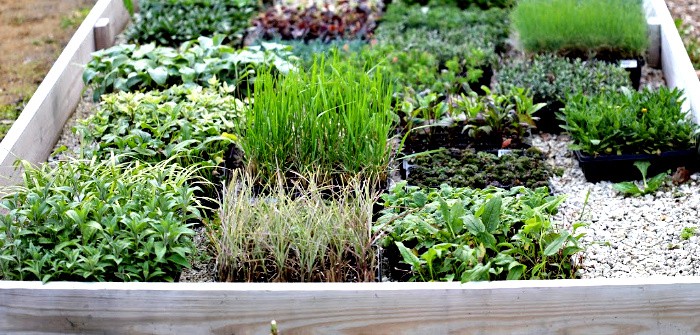
By then, I can be pretty confident that I can leave these plants outside, unprotected upon shipping, and not have the temperature dip to hard frost temps.
This way if a plant has started to break dormancy in my suppliers climate, I know that in my climate it is warm enough where there won’t be a hard frost that can kill the plant.
What Is a Hard Frost?
By a hard frost, I’m talking about temperatures that reach about 28 degrees or lower.
Does This Rule Apply to Both Perennials and Shrubs?
Yes, but keep in mind perennials are a lot more fragile then shrubs. And to make it more complicated not all perennials are treated equally.
There are hardy perennials which are able to tolerate cold temperatures a lot better than perennials that are not hardy for your climate. I try to grow mainly hardy perennials, but for perennials that prefer warmer climates I make sure they receive extra treatment in cold temperatures.
It’s never a bad idea to have some rolls of frost blanket on hand just in case you get some unusually cold nights. In a jam you simply cover your plants with the frost blanket and it helps trap in the heat from the ground.
Step 3- Potting and Labeling
Once your baby plants have arrived it is time to get them potted up. This is Important! You have to pot up your plants using a good soil-less mixture. You also need proper labeling, and an efficient way to pot a lot of plants quickly.
Step 4- Pruning, Watering, Fertilization
After potting up your baby plants you have one mission: keep them alive and healthy! Correct watering, pruning, fertilization and sometimes some chemical applications can make all the difference.
Step 5- Protecting Plants for the Winter
Heavy snow, extreme cold, wind, and torrential rain can completely wipe out your plants and all the hard work you put in all season. Take the necessary steps to protect your plants from winter!
Buying small plants and growing them into a larger, more valuable plant is the core of my backyard nursery at this point. But I will admit, it isn’t the cheapest method.
It requires an investment to purchase plugs, liners, and bare root baby plants.
The good news is if you are on a budget and want to get into growing plants, there are much more affordable options. You can grow perennials indoors from seed, and you can also grow shrubs from hardwood cuttings.
Check Out These Posts Next
Potting Up and Labeling Plants
Growing Shrubs from Hardwood Cuttings
Follow Me
Join my free email list!
Plus, follow me on Facebook, Instagram, and Pinterest.


Thank you very much for all this wonderful information. I have decided to begin my backyard nursery.
Do to Covid, I had to stop working. It was a choice but necessary. Since I chose to leave, I am not eligible for benefits.
I have 3 daughters in college. All graduate school. Not a good time to stop working.
My Backyard nursery hopefully will help offset some of the tutition or rent cost.
Again thank you
Nancy
You’re very welcome Nancy… Best of luck to you!
I love all this info. I definitely want to spruce up my yard using this method but also I would love to have some plant sales like you. It’s a great way to earn some extra money and give customers a healthy product so they will come again next year. This is really helpful, Mark. Thank you! I can’t wait to have my very own blueberry crop in a few years.
Happy to hear you’re excited about this Jeremiah! Blueberries were some of my best sellers, people go crazy for berry plants. Have fun!